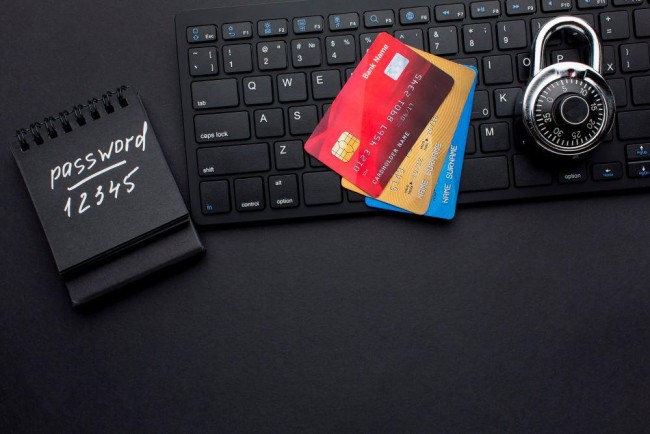
The financial details of customers are crucial and therefore, as one can guess, a data or economic breach could have a cascading effect that, over time, will affect both the internal finances of your business and the reputation you have acquired in your area of activity.
Digital payment fraud is a problem that is, unfortunately, growing worldwide. Still, the use of AI tools has made it possible to implement new techniques and measures to protect the confidential data of online service users.
Unfortunately, however, there has also been an increase in the number of data breaching strategies that fraudsters can use.
Payment fraud prevention tools are designed to deter malicious attempts and flag suspicious transactions before they can cause damage to the internal system used by your company.
Nevertheless, how these systems work is unknown to most people, and the differences between the approaches used may differ depending on the use case or the customer’s area of activity.
Digital payment fraud attempts mainly focus on vulnerabilities in software or hardware, but at the same time, they can target human workers by utilizing social engineering.
Depending on your field of activity, payment fraud prevention tools may be required by relevant authorities. And even if using these applications is not mandated, preventing possible digital attacks on your company should be a priority.
High-quality digital payment fraud detection tools could find anomalies in the recorded transactional data, do real-time monitoring of the internal systems of your business, implement a rule-based detection algorithm based on your input and preferences, and, not least, make use of AI so that the detection percentage constantly improves.
How Does Fraud Prevention Work?
In all industries across all the US states, digital payment fraud is rising. And the reasons for this phenomenon are complex and difficult to explain adequately.
But in a nutshell, the amount of digital data available, combined with new emerging technologies, transformed the 21st century into a golden age for payment and data fraudsters, who can now use tools, like neural networks, to bypass legacy security measures implemented by commercial firms.
Still, how do fraud prevention tools work, and why are they so efficient?
For the sake of this example, let’s say your company is in the hospitality industry, and your services need to process a good deal of financial data from unknown customers.
When a client decides to initiate a transaction on your website or platform, they will provide some payment data, including their credit or debit card information, alongside a digital footprint that can be analyzed for transaction history.
Once the transaction request is submitted, the payment fraud prevention tools you use will record the geolocation of the potential customer, their IP address, if the transaction is performed digitally, and conduct an instant analysis to provide a risk assessment.
The first step in analyzing the obtained data is verifying the card used to pay or withdraw the amounts needed for your services. If the card is expired or has insufficient funds, the transaction will be automatically declined and the process canceled.
If this stage is completed, the program can use AI to detect anomalies in the transaction data and assign a risk score to the operation, taking into account details such as the location and the previous patterns observed from the respective account.
The transaction may be flagged if suspicions exist, and third-party authentication or manual review may be required.

Is the Process Different for Digital Payments?
The transaction verification process is similar for both traditional payment methods, such as credit cards and digital payment systems, which are becoming increasingly popular amongst the general public.
But depending on the device used, there may be a few caveats that need to be taken into account by a high-quality digital payment fraud prevention tool.
For one thing, digital payment methods are often synonymous with mobile devices. Therefore, a quality fraud prevention application will need to leverage the device’s biometric capabilities to confirm the user’s credentials.
If the payment process is performed through an application supported by your company, then the fraud prevention software must employ algorithms to determine whether fraudsters remotely control the device.
Moreover, if your business accepts payment via cryptocurrency, the fraud prevention application must be capable of performing complex blockchain analysis to determine the authenticity of the transaction.
In many ways, verifying a transaction made with a traditional payment method is more straightforward than with a digital one. Due to this reason, the use of sophisticated AI fraud prevention tools evolved with time into a practical necessity for professional enterprises.
What Methods Do Bad Actors Use for Payment Fraud?

For starters, fraudsters might use stolen information to make purchases by impersonating users’ real identities. To prevent this, a high-quality fraud prevention software might do a behavioral analytic assessment of the transaction and flag it if the activity is suspicious.
What can such a program look for? At first, the utilized tool could use the IP address and geolocation data obtained before the payment was approved.
Does the customer usually make transactions from Chicago on a dynamic IP, but now, the transaction request comes from Milwaukee, and the IP is static? In that case, maybe something is wrong.
A business could also face fraudulent chargeback attempts, malware and ransomware attacks, phishing attempts, or social engineering tactics designed to test staff vigilance.
If the transaction is deemed low risk, the utilized tool’s decision engine will, in most cases, automatically determine whether the transaction should be declined or accepted.
But if it is high-risk, it could be flagged and put on hold until a human operator can manually verify it. Overall, the accuracy of modern fraud prevention tools is over 97%. But technologies change, and this percentage could plummet if companies let their guard down.
They Are More Than Necessary
Investing in payment fraud defense tools could be, in the long run, one of the best allocations of funds you can make for your company.
Digital payment fraud defense applications can provide the financial protection your business needs to grow predictably, prevent attempted digital breaches of your service users’ confidential finances, and avert PR disasters from which it may be impossible to recover.
Prevention tools could forestall fraudulent chargeback attempts, keep the operational efficiency of your services at an optimal level, help you comply with the regulations active in your field of activity, and, not least, give you a competitive advantage over your rivals.
